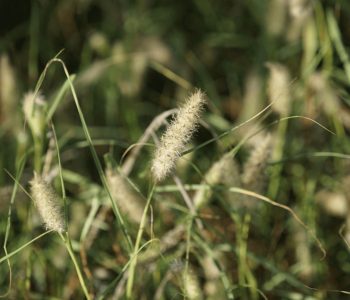Buffel Grass: A Strategic Forage Solution for Sustainable Livestock Production in Arid Regions
Buffel grass (Pennisetum ciliare) is emerging as a key alternative to optimize livestock production in arid zones. Its remarkable ability to improve forage availability, restore degraded lands, and reduce pressure on native grasslands positions it as a valuable ally in the pursuit of sustainable agriculture. In Argentina’s Los Llanos region of La Rioja, researchers from INTA (National Agricultural Technology Institute) have spent years evaluating the performance of this tropical grass species, and the results are promising.
A Resilient Cultivar for Arid Climates
According to Karina Leal, a researcher in the Animal Production Department at INTA La Rioja’s Experimental Agricultural Station, the Texas 4464 cultivar has shown excellent adaptability to arid environments. This drought-tolerant and grazing-resistant variety thrives in regions with highly variable rainfall patterns—a common challenge in this part of the country.
“Buffel grass offers a strategic solution for improving both productivity and resilience in livestock systems that face climatic uncertainty,” notes Leal.
Boosting Biomass Production and Improving Herd Management
Incorporating Buffel grass into livestock systems can significantly increase biomass production—yielding between 2,000 and 3,500 kg of dry matter per hectare. It also helps streamline herd management, particularly during calving season. By directing calving to paddocks planted with this grass, producers can enhance sanitary conditions and reduce stress on the animals.
Best Practices for Successful Establishment
INTA specialists recommend the following for effective Buffel grass establishment:
-
Target low-productivity zones for sowing.
-
Use perimeter fencing to exclude livestock during the initial growth phase.
-
Plant after the onset of rains, typically between October and February.
-
Sow shallowly, using 6–7 kg of seed per hectare.
-
Prefer seeds that are over a year old, as they tend to have higher germination rates.
These recommendations aim to ensure optimal germination and stand persistence under arid conditions.
Strategic Grazing Management for Year-Round Forage Balance
For sustainable use, Buffel grass should be grazed primarily between October and March, allowing native grasslands to rest and regenerate. From April to September, when native pastures offer higher nutritional value, they can be used to balance the forage load and support animal health during the winter months.
To enhance system efficiency, it’s advisable to:
-
Divide the sown area into paddocks.
-
Implement rotational grazing, leaving one paddock to rest annually.
This integrated approach not only maximizes forage productivity but also supports ecosystem resilience.
Toward Climate-Resilient and Responsible Livestock Systems
The combined use of Buffel grass and native pastures represents a forward-thinking strategy to meet the challenges of climate change. By diversifying forage resources and improving pasture management, producers can enhance both productivity and animal welfare while contributing to the sustainability of livestock systems in arid regions.
